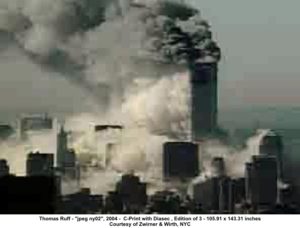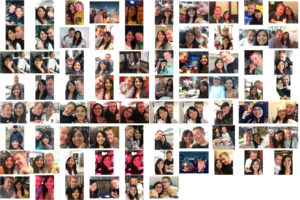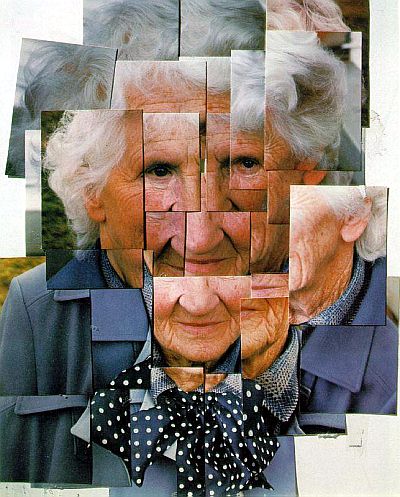C&N Assignment 3 – Preparation
How do I express how Anastasya is part of me, through a self-portrait my initial thought was through a college, however, Anastasya is sat in Hong Kong and I am in Pattaya. Where am I going to get an image of Anastasya from? Well, she is not due here again until the 22nd December so that out and yes I can hear the reader cry out as I did why didn’t I think of this project when she was her or before… such is life I guess.
Thinking back to our work in EYV we touched on the genre of “found photography”, that is art based on the recovery (and possible exhibition) of lost, unclaimed, or discarded photographs. In EYV we look at the work of Thomas Ruff particular his series jepg where he pixelated existing images – most famously “jpeg ny02, 2004” see below of the World Trade Center on 9/11.

The work of Vivian Maier is also found photography because we forget that she was long dead when her work as hobbyist photographer discovered and exhibited.
We also touched on the work of Joachim Schmidt at the beginning of Context and Narrative.
So I was going to need images of Anastasya which obviously I have, but I was going to need images of us of a couple which I don’t (or not in any quantity) for I’m not one of taking selfies I prefer to remain behind the camera but Anastasya has lots. I asked Anastasya, my dad and some friends to forward any images they had.



How to present found imagery is a unique way I suspect will be challenging – there is the simple exhibition paying the voyeuristic nature of people as in Maier’s work, and there is the further manipulation to accentuate the theme as in Ruffs over pixeled images of 9/11 which draws attention the fact that 9/11 was one of the first major global events of the internet age.
I was drawn to the idea of a college which pulls me to “joiners” by David Hockney.

Hockney explains that in his eyes photographs are the opposite to painting as that painting take time and the time can be felt in a painting whereas it cannot in a photograph as a photograph is just a fraction of second. Therefore he experimented with taking multiple photos of a scene or person.
I was fascinated with Hockney’s idea, understand somewhat how (unusual for me) I add that extra dimension, that of time, to an image and I am wondering if this is something I can add to my found imagery.
I have found a Youtube photoshop tutorial that could be come useful.
References
Artknowledgenews.com. (n.d.). Aperture Foundation announces Publication of JPEGS ~ Photographs by Thomas Ruff | Art Knowledge News. [online] Available at: http://artknowledgenews.com/200903317328/Thomas_Ruff.html [Accessed 12 Oct. 2018].
YouTube. (2016). What David Hockney’s Brilliant Collages Reveal About Photos. [online] Available at: https://www.youtube.com/watch?v=rz5vWgKy2Sc [Accessed 12 Oct. 2018].
Walker, P. (2015). Thomas Ruff – jpegs – Pete’s OCA Learning Log. [online] Petewalker-ocalearninglog.com. Available at: https://petewalker-ocalearninglog.com/thomas-ruff-jpegs/ [Accessed 12 Oct. 2018].
Walker, P. (2018). Joachim Schmid – Pete’s OCA Learning Log. [online] Petewalker-ocalearninglog.com. Available at: https://petewalker-ocalearninglog.com/1977/ [Accessed 12 Oct. 2018].
